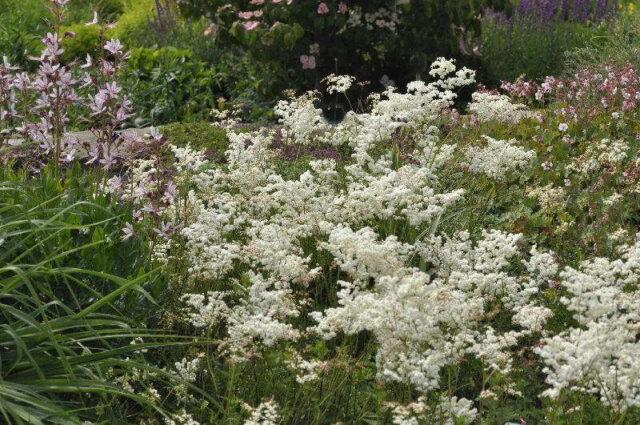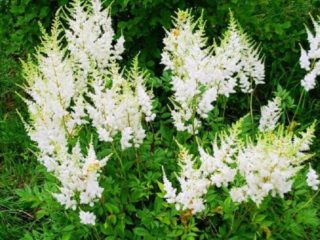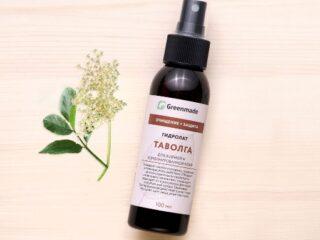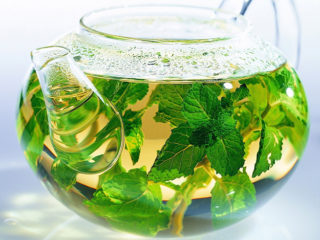Content
- 1 What does meadowsweet grass look like and where does it grow?
- 2 Types of meadowsweet
- 3 Chemical composition of meadowsweet
- 4 What does meadowsweet help with?
- 5 Cooking methods
- 6 The use of meadowsweet in folk medicine
- 6.1 Meadowsweet for pressure
- 6.2 Meadowsweet for oncology
- 6.3 Treatment of the sciatic nerve with meadowsweet
- 6.4 Meadowsweet for herpes
- 6.5 Meadowsweet in gynecology
- 6.6 Meadowsweet for hypothyroidism
- 6.7 Meadowsweet for gastritis
- 6.8 Meadowsweet herb for psoriasis
- 6.9 Meadowsweet for diabetes
- 6.10 Meadowsweet for blood thinning
- 7 Application in cosmetology
- 8 Contraindications to the use of meadowsweet
- 9 How to prepare and collect meadowsweet
- 10 Conclusion
Meadowsweet is called a useful herb that helps against various ailments. The plant also has a spectacular appearance. The medicinal properties and uses of meadowsweet have been known since the times of Kievan Rus. Modern pharmacology uses meadowsweet as a raw material for the manufacture of medications.
What does meadowsweet grass look like and where does it grow?
Ivanov color has several names. The herb is also called:
- meadowsweet or common meadowsweet;
- meadowsweet
Medicinal herbs are often grown for decorative purposes in summer cottages. Since ancient times, the plant has been valued for its antiseptic properties.
Meadowsweet is a rhizomatous herb that has a strong, straight stem. The leaves are palmate or pinnate. The plant is distinguished by corymbose-paniculate inflorescences. The color of the flowers varies from pinkish to cream.
Meadowsweet grows everywhere. Grass can be seen on the banks of fresh water bodies and rivers, in swamps and damp meadows. Meadowsweet also prefers moist thickets of birch or alder forests. Flowering is observed in the summer months. The height of the plant can reach 1.5 m.
Types of meadowsweet
The perennial belongs to the Rosaceae family. This is a subshrub or ornamental grass that lives in the temperate zone of the Northern Hemisphere. Spiraea or meadowsweet has a pronounced honey aroma.
Meadowsweet has about 100 species. For example, common meadowsweet includes the following varieties:
- Captivity. The bush reaches a height of 50 cm.
Common meadowsweet, belonging to the Pleno variety, is distinguished by white double flowers
- Grandiflora. The bush grows up to 60 cm.
Common meadowsweet (Grandiflora) has large creamy inflorescences
In Russia, meadowsweet, called vyazolifolia, is widespread. This meadowsweet includes the following varieties:
- Aurea. The variety is characterized by large golden-green leaves.
Meadowsweet, which belongs to the Aurea variety, can grow up to 50 cm
- Rosea. This variety is valued for its spectacular appearance.
Meadowsweet (Rosea) has pinkish inflorescences
Chemical composition of meadowsweet
The plant has numerous medicinal properties, which is due to the unique composition of the herb. Meadowsweet contains essential oils, catechins, steroids, fatty acids, which are present in the aerial part.
Meadowsweet roots are a source of:
- tannins;
- heparin;
- ascorbic acid;
- glycosides (spirein, isosalicin, monotropitin);
- polyphenolic compounds (caffeic and ellagic acids);
- flavonoids (kaempferol, quercetin);
- glycerides of linoleic and stearic acids.
Meadowsweet contains essential oils in significant quantities. They have a distinct honey aroma and include vanillin, methyl salicylate and ethyl benzoate.
What does meadowsweet help with?
Meadowsweet, the photo and description of which is located above, has the following beneficial properties:
- pain reliever;
- choleretic;
- antiseptic;
- sedative;
- stabilizing blood pressure;
- anti-inflammatory;
- pain reliever;
- anti-allergenic;
- antiviral;
- anticarcinogenic;
- anti-aging;
- astringent;
- anthelmintic.
The herb has a beneficial effect on almost all systems of the human body:
- nervous;
- cardiovascular;
- digestive.
The plant promotes vasodilation, has a laxative, diuretic, and disinfectant effect.
What are the benefits of meadowsweet grass for women?
Ivanov color is indicated for use during menopause. Hormonal changes associated with the decline of ovarian function are often accompanied by pressure surges, increased sweating, rapid heartbeat and hot flashes.Infusions and decoctions of meadowsweet are taken for hypertension and swelling.
The medicinal plant is used for the treatment of gynecological diseases. Products made from meadowsweet are suitable for douching.

External and internal use of meadowsweet drugs allows you to treat diseases of the reproductive, endocrine and circulatory systems
Meadowsweet during pregnancy
The plant is actively used in alternative medicine. However, meadowsweet has both medicinal properties and contraindications for women. Despite the absence of allergens in the composition, decoctions, infusions and teas are not recommended to drink during pregnancy.

Meadowsweet has an effect on the circulatory system, which may have an undesirable effect on the condition of the mother and fetus
What are the benefits of meadowsweet for children?
Ivan's color is used for viral infections. The herb helps with sore throat, bronchitis and pneumonia.

Meadowsweet is prescribed to children as part of complex therapy from the age of seven
What are the benefits of meadowsweet for men?
It has been proven that meadowsweet products help strengthen the vascular wall and normalize blood pressure. They are taken for hypertension and increased blood viscosity.

Decoctions and infusions of meadowsweet help prevent atherosclerosis, heart attack and prostatitis
Cooking methods
The choice of dosage form depends on the indications for use. Preservation of healing properties requires compliance with the instructions for preparing potions.
How to brew meadowsweet correctly
The use of meadowsweet flowers, leaves and roots allows for the prevention and treatment of various pathologies. The effectiveness of using a medicinal plant depends on the correct manufacture of traditional medicine. It is known that meadowsweet tea has not only benefits, but also harm.It is important to maintain certain proportions when brewing a drink.
Meadowsweet flowers (15 g) are poured into 250 ml of boiling water. The container is closed for infusion and the drink is filtered after 15 minutes.

You need to drink decoctions and infusions of meadowsweet in small sips, which has a positive effect on the condition of the oral cavity.
Tincture
The dosage form is suitable for both external and internal use. To prepare the tincture, mix meadowsweet inflorescences (25 g), sugar (10 g) and alcohol (0.5 l). The composition is placed in a dry and dark place for 12 days. Before use, the product must be strained. The product is taken orally no more than three times during the day, after dissolving 20 drops in a glass of water.

A tincture of meadowsweet inflorescences is used for gastric pathologies, burns, purulent wounds and trophic ulcers.
Infusion
The water product is used in complex therapy to treat various pathologies. Indications for use include:
- leukemia, psoriasis;
- insomnia;
- hepatitis;
- diseases of the urinary tract and digestive system;
- diabetes;
- inflammatory processes;
- swelling;
- bleeding.
To prepare a healthy drink, take a teaspoon of dried flowers and pour a glass of boiling water over them. The product is infused until it cools.

An infusion of water from meadowsweet inflorescences is consumed in small portions throughout the day.
Decoction
To prepare the dosage form, take a teaspoon of crushed dry meadowsweet roots in a glass of boiling water. A decoction should be prepared using a water bath. The duration of simmering of the product is half an hour, after which it is infused and filtered.

Meadowsweet decoction is used for external and internal use to treat pathologies of the kidneys and nervous system.
Tea
To prevent ARVI and inflammatory processes, it is recommended to drink a drink from meadowsweet. To prepare tea, use finely chopped leaves (two tablespoons). They are brewed for 15 minutes in 1 liter of boiling water. The drink is drunk every two hours throughout the day.

To improve the taste of meadowsweet leaf tea, add a small amount of honey
Ointment
Midsummer is a suitable herb for making various medicines. Some formulations can be used externally for the treatment of rheumatism and skin diseases.
An ointment is made from meadowsweet, which includes dry rhizomes of the plant (20 g) and a fatty base. The raw materials should be crushed to a dust state and mixed with petroleum jelly or butter (80 g). The resulting ointment is applied to the affected areas of the skin. The composition can be rubbed into sore joints.
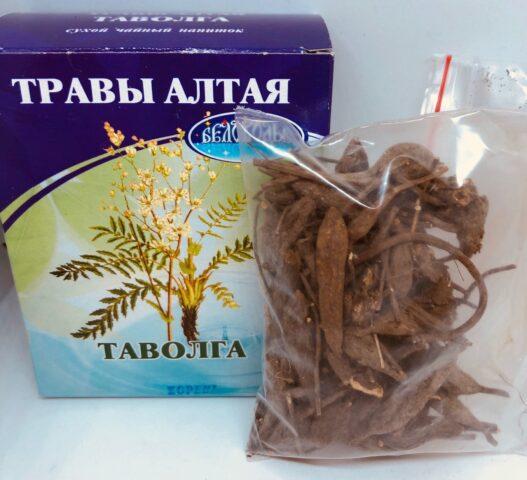
Procedures using meadowsweet ointment are recommended to be carried out before bedtime.
The use of meadowsweet in folk medicine
Herbal remedies allow for the treatment and prevention of various pathologies. The advantage is that all parts of the plant can be used.
Meadowsweet for pressure
Hypertension is diagnosed in a significant number of older people. The pathology is accompanied by a significant deterioration in well-being and decreased performance. To normalize blood pressure, it is advisable to use an infusion of meadowsweet root.
To prepare a healing remedy, you need to rinse and then peel the meadowsweet rhizomes (15 g). The raw materials are poured with 500 ml of boiling water and simmered in a water bath for half an hour. The drink is infused for an hour and filtered.Before use, add water to the original volume.
The infusion should be taken three times a day. The dosage per dose is 25 ml.

Before drinking the infusion of meadowsweet rhizomes, you can add sugar or honey.
Meadowsweet for oncology
The healing herb is used in the complex treatment of malignant tumors. To strengthen the body and improve blood composition, a decoction of meadowsweet roots is prepared and consumed. Pour two teaspoons of raw material into a glass of boiling water and simmer the composition in a water bath for half an hour. The medicine is taken on an empty stomach three times a day, three tablespoons.

Before using a decoction of meadowsweet roots for cancer, you should consult a doctor.
Treatment of the sciatic nerve with meadowsweet
The meadowsweet plant has anti-inflammatory properties. It is used for diseases of the joints and spine.
As part of the complex therapy of pathology, a decoction of meadowsweet roots is used. The composition, including four tablespoons of raw materials and a liter of water, is simmered in a water bath. After an hour, the broth is filtered. The product is taken four times a day, 50 ml.

Meadowsweet decoction and tea can minimize inflammation and pain that accompany sciatica
Meadowsweet for herpes
Papules are usually localized in the lip area. They may be present on the nasal mucosa. The rash is accompanied by severe itching and swelling.
To eliminate the manifestations of herpes virus infection, a tincture is made. The product includes 25 ml of calendula solution (10%), 225 ml of water and 25 meadowsweet flowers. The duration of infusion is one day.
Dosage depends on age characteristics:
- children (from seven years old) - 20 drops per glass of water three times a day;
- adults - half a teaspoon per dose.

The duration of treatment of herpes with a tincture containing fireweed is ten days.
Meadowsweet in gynecology
The use of the infusion helps eliminate inflammatory processes in the pelvic organs. Dry grass (a teaspoon) is poured with boiling water (one glass). The product is infused for several hours in a dark place and taken in small portions throughout the day.
To treat infertility, meadowsweet is combined with red clover and linden (three tablespoons of raw materials each). The herbs are poured with boiled water (1 liter), infused and taken twice a day, a glass.
Uterine bleeding is treated with tincture of meadowsweet roots. The product is drunk a teaspoon twice a day. For fibroids or endometritis, a collection is used that includes the following items:
- chamomile;
- calamus rhizomes;
- St. John's wort;
- yarrow;
- calendula;
- juniper berries;
- meadowsweet.
The mixture is poured with vodka (1.5 l) and left for two weeks in a dark and dry place. The tincture is taken in a teaspoon, after diluting it with water.

Decoctions and infusions of meadowsweet are used for douching and baths for gynecological diseases
Meadowsweet for hypothyroidism
Thyroid diseases are caused by insufficient or excessive production of hormones. Meadowsweet helps normalize the function of the endocrine system.
Meadowsweet root (50 g) is peeled, washed and crushed. The raw materials are poured with vodka (1 liter) and left for two weeks in a dark place, stirring occasionally. Take 1 teaspoon before meals.
The course of treatment for the thyroid gland with meadowsweet tincture is long and lasts several months.
Meadowsweet for gastritis
For diseases of the digestive system, it is recommended to drink an infusion that includes meadowsweet. For half a liter of boiling water, take two teaspoons of raw materials. The product is infused for an hour and taken three times a day, half a glass.

Medicines based on meadowsweet eliminate pain due to gastritis and intestinal disorders
Meadowsweet herb for psoriasis
Exacerbations of a chronic disease can be treated with meadowsweet. To 40 g of petroleum jelly or baby cream add meadowsweet flower powder (10 g). The affected areas should be lubricated three times a day.

Meadowsweet ointment accelerates the healing of the skin with psoriasis
Meadowsweet for diabetes
The use of compositions that include Ivanov color helps normalize blood sugar levels. For this purpose, pour a tablespoon of dry herb with two glasses of boiling water and leave for 15 minutes in a water bath. The product can be taken an hour after straining.
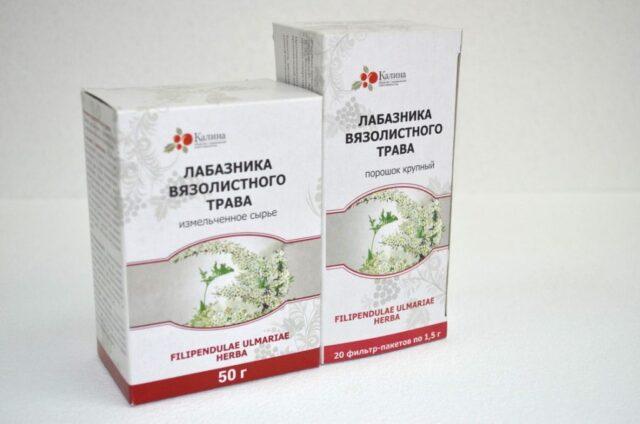
An infusion of meadowsweet herb is drunk three times a day for a month.
Meadowsweet for blood thinning
The use of compositions containing ivan color has a positive effect on the functioning of the heart and blood vessels. Meadowsweet grass is known to thin the blood. For this purpose, decoctions based on medicinal plants are taken. The product is made from meadowsweet root. Raw materials (5 g) are poured into a glass of water and boiled for 15 minutes. Drink the decoction three times a day, one tablespoon at a time.
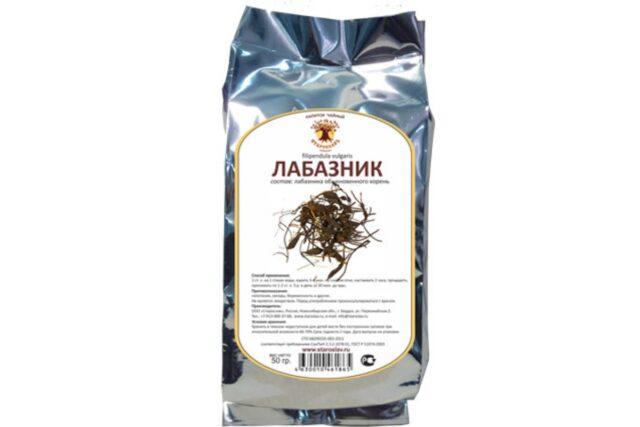
Ivanov color is used for diseases of the circulatory system
Application in cosmetology
Meadowsweet is actively used in folk medicine. Meadowsweet is also valued in cosmetology. The herb helps eliminate acne by regulating sebum production.The plant helps moisturize and nourish the face. Infusions and decoctions are used as a hair rinse to give additional volume to curls.
Contraindications to the use of meadowsweet
The use of products made from medicinal herbs is not recommended in a small number of cases. For example, the use of meadowsweet tincture is contraindicated for liver diseases. The grass produces an astringent effect. Decoctions and infusions are not used for constipation.
Hypotension is also a contraindication to the use of products containing meadowsweet extract. Otherwise, the pressure will decrease, causing dizziness, weakness and nausea.
General contraindications include the presence of hypersensitivity. It should be remembered that an overdose if the proportions are incorrectly calculated or abused can provoke undesirable reactions from the digestive system. When used externally, it is important to conduct a test to ensure there is no allergy.
How to prepare and collect meadowsweet
Meadowsweet is classified as a medicinal plant. The collection and preparation of meadowsweet is carried out during the flowering period. Suitable months are July and August. The inflorescences are cut and dried in a ventilated area, spread on parchment in a thin layer. Meadowsweet is stored in a box. Being in a dark and dry place is essential.
The roots are harvested in autumn or early spring. They are washed before drying. Leaves for medicinal purposes are also cut during the flowering period.
Conclusion
The medicinal properties and uses of meadowsweet are quite varied. Due to the active use of medications and the development of the pharmaceutical industry, the popularity of the plant has decreased. The inclusion of products made on the basis of meadowsweet in complex therapy helps to increase its effectiveness. The herb is suitable for both external and internal use. Regular use of infusions, tinctures and decoctions significantly improves overall well-being.

